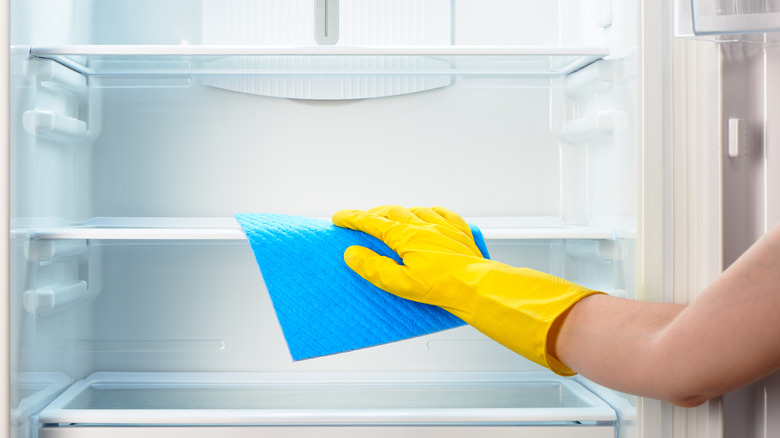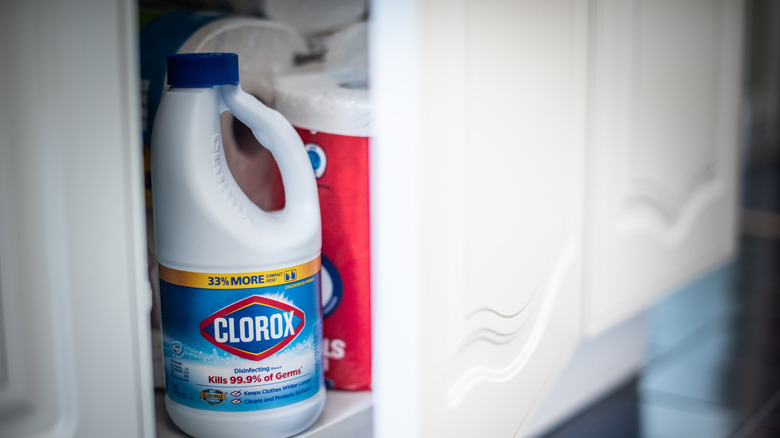You Should Never Use Bleach To Clean Your Fridge. Here's Why
There's nothing like a clean and well-organized refrigerator. It just sends good vibes throughout the house and makes it easy to find what you're looking for. According to The Spruce Eats, while you want to clean up spills as you go and toss expired food on a weekly basis, your refrigerator should get a thorough and deep cleaning about every three months to ensure the storage space is clean and safe. This is when you take out drawers and shelves and wash them down so they look spic and span and sparkly new.
In fact, Martha Stewart points out that the best time to schedule this cleaning process for your fridge is generally around the time you feel like there's hardly any food in it and you need to go grocery shopping. This will eliminate how much food you need to keep cool while you clean. But what type of cleaner should you use when you do this deep cleaning? Well, to start with, you should probably avoid using pure bleach to clean the interior of your refrigerator — here's why.
Your food could absorb the bleach's odor
Bleach is a strong chemical cleaner, a go-to when you want to kill bacteria or mold, just not necessarily in the refrigerator. Kitchn spoke to Angela Bell, a cleaning expert from Grove Collaborative, who shared that you should not clean the inside of your refrigerator with bleach. Bell told the outlet, "Most appliance manufacturers urge against the use of bleach for cleaning the fridge, as it can harm the materials of the fridge interior and can be a safety risk if transferred to food."
But that's not the only reason you may want to avoid cleaning the inside of your refrigerator with bleach. Martha Stewart notes that foods absorb odors and for this reason, you want a mild cleaner that is preferably unscented. The site recommends using hot water and baking soda for this task. However, the CDC shares that while you should use "warm sudsy" water to clean your refrigerator, after this process, you can also use a tablespoon of bleach diluted with a gallon of water to sanitize the inside, and then dry thoroughly before returning shelves and drawers to their original place.

